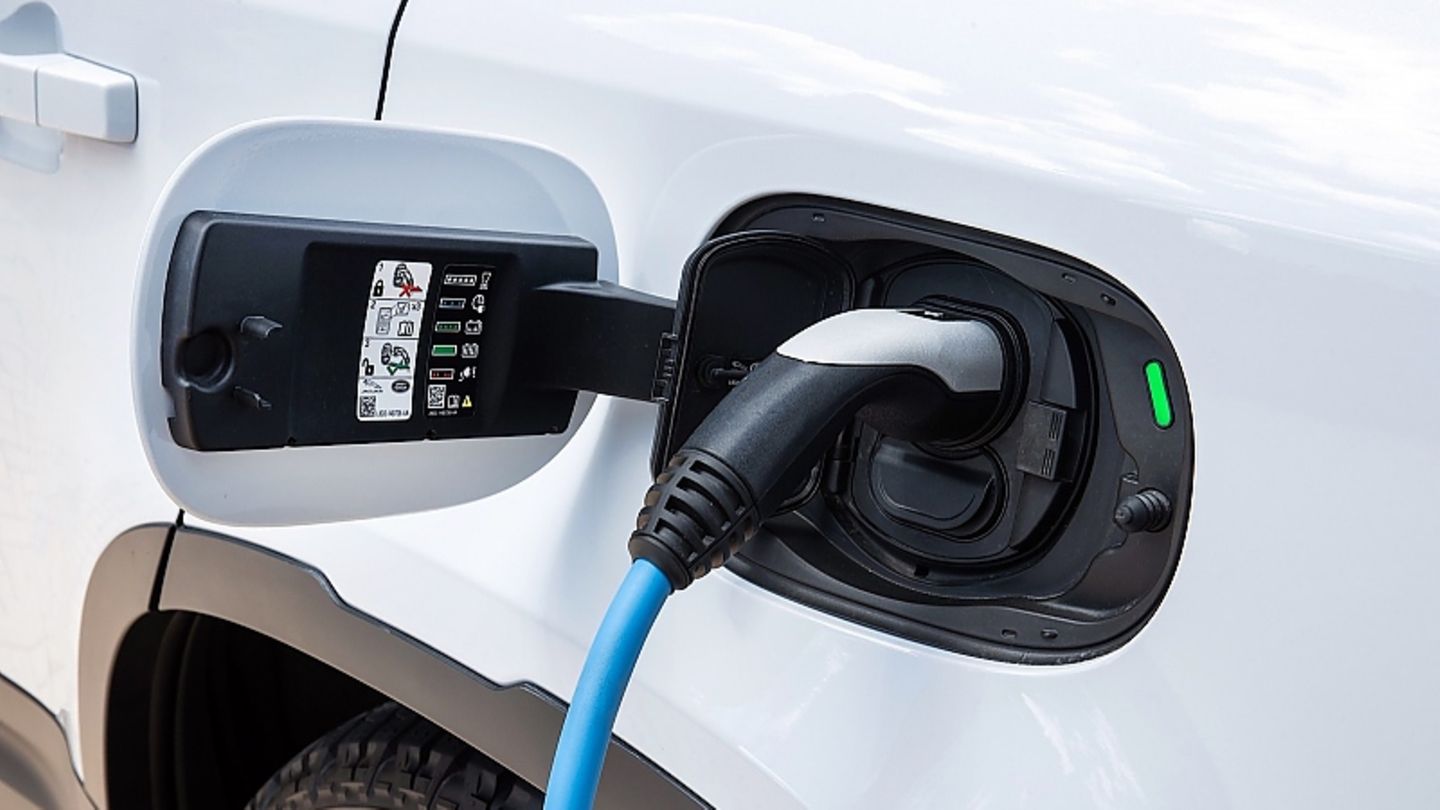For the first time, Land Rover is also offering the successor to the legendary Defender as a plug-in hybrid. Is the Stromer also good in the field?
Physics is relative. And highly subjective when you sit behind the wheel of a new Land Rover Defender, leaning deep to the left on a sloping rock face. “It just has to tip over now,” says the mind, while instinctively stretching in the direction of the passenger door: “That one more croissant this morning was perhaps the one too many that shifted the weights unfavorably.” It probably didn’t. Because the off-roader is over five meters long and weighs more than 2.6 tons with a spare wheel. It can be inclined up to 45 degrees, you can read it later in the data sheet. Another ten meters and he is on level ground again.
On halfway horizontal ground. Because the Defender PHEV is digging through the terrain. In the vicinity of Manresa, northwest of Barcelona, Land Rover wants to show that the successor to the legendary “Landy” is not only on par, but clearly superior. And that also in purely electric driving mode. And in the field.
Because for the first time the Defender is also available with a plug-in hybrid. And it manages up to 53 kilometers silently and with pure electric power. A duo works under the hood of the five-door, consisting of a two-liter petrol engine from the Ingenium range and an electric motor. The petrol engine has an output of 221 kW / 300 PS, the Stromer contributes 105 kW / 143 PS. Makes a system output of 297 kW / 404 PS.
The electric motor is fed by a battery with a capacity of 19.2 kWh. The power storage unit is charged via a socket on the rear left. At a 50 kW fast charging station, it should be 80 percent full again after half an hour. In addition, the system recovers the energy generated when braking and decelerating and feeds it back into the battery. According to the current NEDC2 calculation, the hybrid Defender consumes just 2.8 liters of gasoline per 100 kilometers, which corresponds to CO2 emissions of 23.8 grams per kilometer. The power consumption with purely electric driving is 23.8 kWh per 100 kilometers. Anyone who wants to get through the terrain cleanly has no problem in the pure electric mode, which can be selected at the push of a button. Thanks to the linear power development, the Defender delivers its maximum torque from the first turn. Even under power, it can be driven with normal and off-road reduction. Automatic is already on board. Combined with the electronically controlled air springs, the new Defender can also get through almost anywhere electrically.
The official off-road data with air suspension: the ground clearance is 291 millimeters, the fording depth 900 millimeters; the approach angle is 38 degrees at the front and 40 degrees at the rear, the ramp angle is 28 degrees, the maximum climbing ability, as well as the maximum lateral inclination angle, is 45 degrees. Up a bare rock face: no problem. Turn right into a – let’s call it – path full of coarse rubble: No problem – first the right front tire sinks into a deep hollow and the left rear wheel floats freely in the air, then the front wheel digs up with a sensitive use of gas, the rear wheel gets back on the ground and on it goes.
So the new Defender manages more off-road than its predecessor. And otherwise? Otherwise it is a comfortable SUV. Nothing more of the robust charm of the workhorse that you could only love or hate. Anyone taller than 1.65 meters had to squeeze between the steering wheel and the backrest of the old Defender. With the new Defender: No problem. Comfortable seats, adjustable in many ways, as well as the multifunction steering wheel. Plenty of space and shelves, robust handles all around, many useful assistance systems for on and off-road. Unsure whether the wheels are really straight left and right on the small bridge made of two tree trunks? Cameras look down the sides and show every millimeter.
With the old Defender, long stretches of motorway were torture: uncomfortable suspension, straight-line stability a disaster, not to mention the background noise. The new? Almost a touring car. Relaxed in – relaxed out. Plus the other virtues of a powerful all-wheel drive: the maximum trailer load of three tons, a roof load of up to 300 kilograms. The new Defender is suitable for everyday use – but too good for everyday use. If you don’t really drive off-road now and then, pull horse trailers over muddy dirt roads or plow through the deep snow from your homestead in winter, you are simply overdressed with the new Defender. And if you really want to go to the most remote corners of the world, you should perhaps wait a little longer. If necessary, you could get the old Defender running again, even in the deepest bush, with two pebbles and a Swiss knife. It remains to be seen whether the successor’s on-board electronics will work that way.
The prices are accordingly. The cheapest Land Rover Defender is available as a two-door from 48,740 euros. If you want to be on the road with electrical support in the plug-in hybrid Defender PHEV, you have to reckon with at least 74,700 euros.
I am Pierce Boyd, a driven and ambitious professional working in the news industry. I have been writing for 24 Hours Worlds for over five years, specializing in sports section coverage. During my tenure at the publication, I have built an impressive portfolio of articles that has earned me a reputation as an experienced journalist and content creator.




